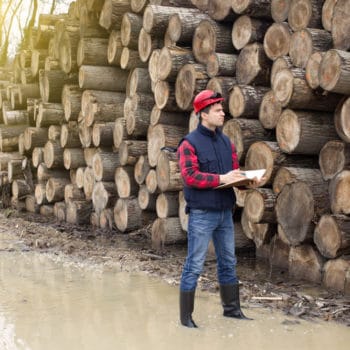Why We Love It
-
$27,460Potential Avg. Salary
-
6.1%Job Growth Rate
-
Growing DemandJob Outlook
-
Dependable Daily WorkloadCareer Attribute
A landscaper is responsible for attending to elements on a ground, that usually surrounds a business or residential property. He or she creates and maintains flowers, pulls weeds, and repairs any physical structures like sidewalks or fairways located around the building.
Recommended Schools
What is a Landscaper?
Duties
As a landscaper, you must handle the following responsibilities:
- Utilize and maintain a wide range of small equipment or machinery like rotary mowers, pruning saws, electric clippers, blowers, hedge trimmers and pressure washers to preserve the appearance of assigned grounds.
- Cultivate and take care of various bushes, trees and plants through regular activities like pruning, fertilizing, mulching, watering and transplanting vegetation as needed.
- Prepare and compile appropriate documentation such as work reports, work requests, reports of financial transactions related to supplies or materials utilized, chemical and water use logs.
- Store and update the inventory of tools, supplies or materials and equipment issued by the company to make certain they are available and in good condition when required for a task; this includes letting the lead landscaper know in case servicing needs to take place.
- Maintain a clean and professional look with regard to uniforms, nametags, and your own personal appearance in line with company protocols.
Day In The Life
If you are interested in becoming a landscaper, much of the day will be spent working outdoors completing assigned tasks related to landscapes. Whether you are working on private property or state parks, the day to day work will require superior physical stamina since the role involves weeding, planting, changing the terrain, developing irrigation systems, installing new construction like water features as well as other routine maintenance.
The type of work requires utilizing various tools as well as equipment like leaf blowers, shovels, chainsaws and tow trucks to bring down trees, remove harmful plant growth and lay new turf when required. Once in a while, you will get the opportunity to collaborate with other professionals such as landscape architects or designers to further develop or renovate features on the property, by performing the majority of manual work on their inputs.
Work Schedule
Landscapers generally work around 40 hours every week, with the occasional overtime through the weekend. Typically, you will be likely to keep busier in the warmer months due to the seasonal nature of the work. Most of the work is undertaken outdoors in all kinds of weather conditions, which can be challenging and require you to wear protective gear such as overalls and eyewear. Since multiple project sites require you to travel between places, having a driving license is particularly helpful.
Growth Of The Job
Job prospects in this industry are strong. The U.S. Bureau of Labor Statistics (BLS) projects an increase in the employment rate for landscape related work at 5% between 2014-2024. If you are a part of a large company, a gardener position is eventually promoted to a more supervisory role such as manager or master gardener. Many even start out with independent work on a contractual basis, once they have enough experience.
People will always require assistance from professionals like landscapers when it comes to taking care of their lawns, keeping their driveways clean and maintaining public spaces like sidewalks. In addition, commercial properties will continue to expand their need for green spaces to offset concrete building structures to maintain environmental sustainability and add curb appeal.
Typical Employers
Landscapers can find work with properties that have existing grounds, e.g. resort landscapes, university and corporate campus grounds, athletic fields, private residences, state parks, cemeteries, heritage areas, golf courses, boating lakes and amusement parks such as Disney World.
Recommended Schools
How To Become a Landscaper
You do not require a formal education to start off your career as a landscaper, since most skills are learned on the job. Some of the equipment and tools are dangerous to operate, employers usually provide safety training to familiarise you with operation procedures early on. At a minimum, you should possess a high school diploma or GED.
If you want to advance your career further with better paying roles, you should demonstrate a solid foundation in concepts related to landscape design, ecology, horticulture or agriculture. Further, you should display a good ability to take directions and complete projects assigned in a timely manner, either independently or as part of a team. Attention to detail and being a trustworthy professional is essential to excel as a landscaper and stand apart from the existing competition.
Landscaper Salary Data
We’ve provided you the following to learn more about this career. The salary and growth data on this page comes from recently published Bureau of Labor Statistics data while the recommendations and editorial content are based on our research.
National Anual Salary
Low Range
$20,820Average
$27,460High Range
$39,520National Hourly Wage
Low Range
$10/hrAverage
$13/hrHigh Range
$19/hrHow do Landscaper salaries stack up to other jobs across the country? Based on the latest jobs data nationwide, Landscaper's can make an average annual salary of $27,460, or $13 per hour. This makes it an Above Average Salary. On the lower end, they can make $20,820 or $10 per hour, perhaps when just starting out or based on the state you live in.
Salary Rankings And Facts
#739 Nationally for All Careers
Programs and Degrees
Here are the most common degrees for becoming a Landscaper. a is usually recommended and specifically a degree or coursework that prepares you for the particular field, see below.
Highest Education Among Landscapers
- 0.2% Doctorate
- 0.9% Masters
- 5.7% Bachelors
- 4.5% Associates
- 15.2% College
- 34.2% High School
- 39.2% Less than High School
Job Growth Projections and Forecast
2014 Total Jobs
1,167,8002024 Est. Jobs
1,239,600Job Growth Rate
6.1%Est. New Jobs
71,800How does Landscaper job growth stack up to other jobs across the country? By 2024, there will be a change of 71,800 jobs for a total of 1,239,600 people employed in the career nationwide. This is a 6.1% change in growth over the next ten years, giving the career a growth rate nationwide of Below Average.
Growth Rankings And Facts
#364 Nationally for All Careers
What Companies Employ The Most Landscapers
| Industry | Current Jobs | New Jobs Needed | % Increase |
|---|---|---|---|
| Landscaping services | 464,300 | 32,700 | 33% |
| Self-employed workers | 285,500 | 8,800 | 9% |
| Local government, excluding education and hospitals | 80,500 | 4,500 | 5% |














